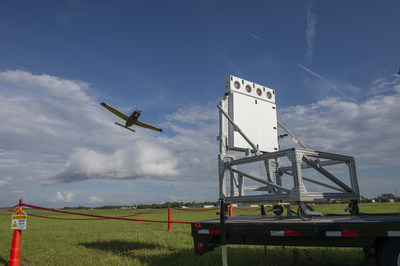Notice: Trying to get property 'post_parent' of non-object in /home/defensea/english.defensearabia.com/wp-includes/link-template.php on line 479
Notice: Trying to get property 'post_name' of non-object in /home/defensea/english.defensearabia.com/wp-includes/link-template.php on line 517
Notice: Trying to get property 'ID' of non-object in /home/defensea/english.defensearabia.com/wp-includes/link-template.php on line 534
Notice: Trying to get property 'post_excerpt' of non-object in /home/defensea/english.defensearabia.com/wp-content/themes/mh-magazine/includes/mh-custom-functions.php on line 392
Notice: Trying to access array offset on value of type bool in /home/defensea/english.defensearabia.com/wp-content/themes/mh-magazine/includes/mh-custom-functions.php on line 394
Notice: Trying to get property 'post_title' of non-object in /home/defensea/english.defensearabia.com/wp-content/themes/mh-magazine/includes/mh-custom-functions.php on line 394
FARNBOROUGH, England, July 17, 2018 /PRNewswire/ — Raytheon Company’s (NYSE: RTN) Intelligence, Information and Services business demonstrated its Low-Power Radar’s ability to provide precision approach guidance to landing aircraft from 15 nautical miles, which is five more than the current capability, to military officials representing the U.S. Navy, Army and Air Force in Brooksville, Fla., June 26-28.

LPR is a small, one-meter square Active Electronically Scanned Array, or AESA, multi-mission x-band radar ideal for precision approach landings, aviation surveillance, precision weather observations, and small drone detection and tracking.
“This radar is like a Swiss Army Knife; it has broad applications across a lot of missions,” said Matt Gilligan, vice president of Raytheon’s Navigation, Weather and Services mission area. “Its extended range expands options for managing multiple fast aircraft on approach.”
LPR’s origin as a weather radar gives it an advanced dual-polarization capability that allows it to discern between heavy rain, hail, snow and sleet. It can also detect non-meteorological echoes from ground clutter, birds, and tornado debris. It does this by transmitting and receiving both horizontal and vertical polarizations, unlike most radars that only transmit and receive radio waves with a single polarization.
Because it’s an AESA radar, it offers higher-quality images than conventional radars. Phased-array radars are also cheaper to maintain and offer adaptive beam scanning, which allows the radar to track more targets and interweave between different radar applications.
With no moving parts, LPRs are more reliable and easier to maintain, giving them longer lifetimes and lower life-cycle costs. The program is on track for initial production in 2019.



Be the first to comment